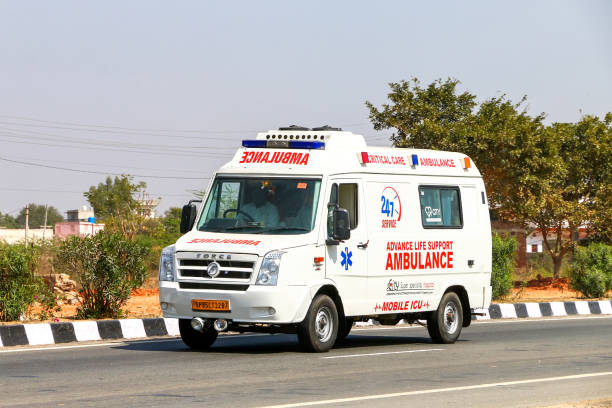Not all ambulances are the same. Learn the differences between BLS, ALS, PTA, and more—so you know what’s right for your needs.
Many people assume all ambulances serve the same purpose, but the reality is quite different. Whether you’re booking for a critical emergency or a routine hospital discharge, choosing the right type—BLS, ALS, PTA, or even a mortuary service—matters. This guide will walk you through each type, who it’s for, and how Ambimed helps you pick the right one in seconds.
Why the Right Ambulance Type Matters
Different medical conditions require different levels of care. Booking a non-equipped ambulance for a critical patient can delay life-saving treatment, while using an ICU-grade ambulance for a routine trip can be unnecessarily costly. That’s why Ambimed provides a range of ambulance types tailored to your specific needs.
Basic Life Support (BLS) Ambulance
BLS ambulances are suitable for patients who need transportation but are in a stable condition. These are commonly used for hospital discharges, routine check-ups, or non-critical inter-hospital transfers.
Includes:
- Stretcher and oxygen supply
- Basic first aid equipment
- Trained paramedic
Best for: Non-emergency cases and patient monitoring during transport
Advanced Life Support (ALS) Ambulance
ALS ambulances are equipped to handle serious medical emergencies such as cardiac arrests, trauma, or stroke. They are staffed with a paramedic or doctor and include advanced medical equipment.
Includes:
- Ventilator and defibrillator
- Cardiac monitor and ECG
- IV infusion pumps and emergency medications
Best for: Critical care cases and ICU-level transport
Patient Transport Ambulance (PTA)
PTAs are designed for stable patients who require basic comfort and safety while traveling to or from medical facilities. These are budget-friendly options for longer non-emergency transfers.
Includes:
- Comfortable seating or stretcher
- Minimal equipment
- Basic patient assistance
Best for: Routine check-ups, discharges, intercity transfers for stable patients
Mortuary Ambulance
These ambulances are specially designed for transporting deceased individuals in a respectful and hygienic manner. They offer long-distance capabilities and custom-built storage options.
Includes:
- Cold storage (optional)
- Clean and secure interior
- Professional handling
Best for: Transporting the deceased with dignity and care
Choosing the Right Service with Ambimed
Ambimed makes the decision-making process easy through our app and website. Simply enter your situation and destination, and the system recommends the best-suited ambulance type for your needs. With real-time availability and transparent pricing, you’re always in control.



